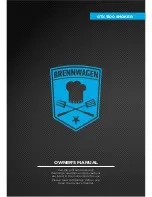
Operating the cooktop
36
How the burners work
Each burner has overheat protection,
which prevents the overheating of the
ceramic top (see "Overheat
protection").
Standard burners have one heating
band, variable burners have two
heating bands.
If a power level is set, the heating turns
on and the heating band is visible
through the ceramic top. The heat
output of the burners depends on the
power level set and is controlled
electronically. This causes the "cycling"
of a burner: the heating is turned on
and off.
Cookware
The most suitable cookware
is metal
pots and pans with thick bottoms that,
when cold, bulge inwards slightly. On
warming, the bottom extends and sits
level on the burner; this conducts the
heat optimally.
cold
hot
Glass, ceramic or stoneware is
less
suitable
. These materials do not
conduct the heat well.
Not suitable
are plastic and aluminum
dishes. These melt at high
temperatures.
Cookware of aluminum or with an
aluminum base can cause shiny
metallic spots. These spots can be
removed with ceramic glass or stainless
steel cleaner (see "Cleaning and Care").
Pots and pans with bases with
pronounced edges or ridges can
scratch the ceramic burner. Only use
pots and pans with smooth bases.
Lift pans into position on the cooktop.
Sliding them into place can cause
scuffs and scratches.
Often the maximum diameter quoted by
manufacturers refers to the diameter of
the top rim of the pot or pan. The
diameter of the base (generally smaller)
is more important.
















































